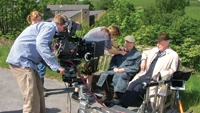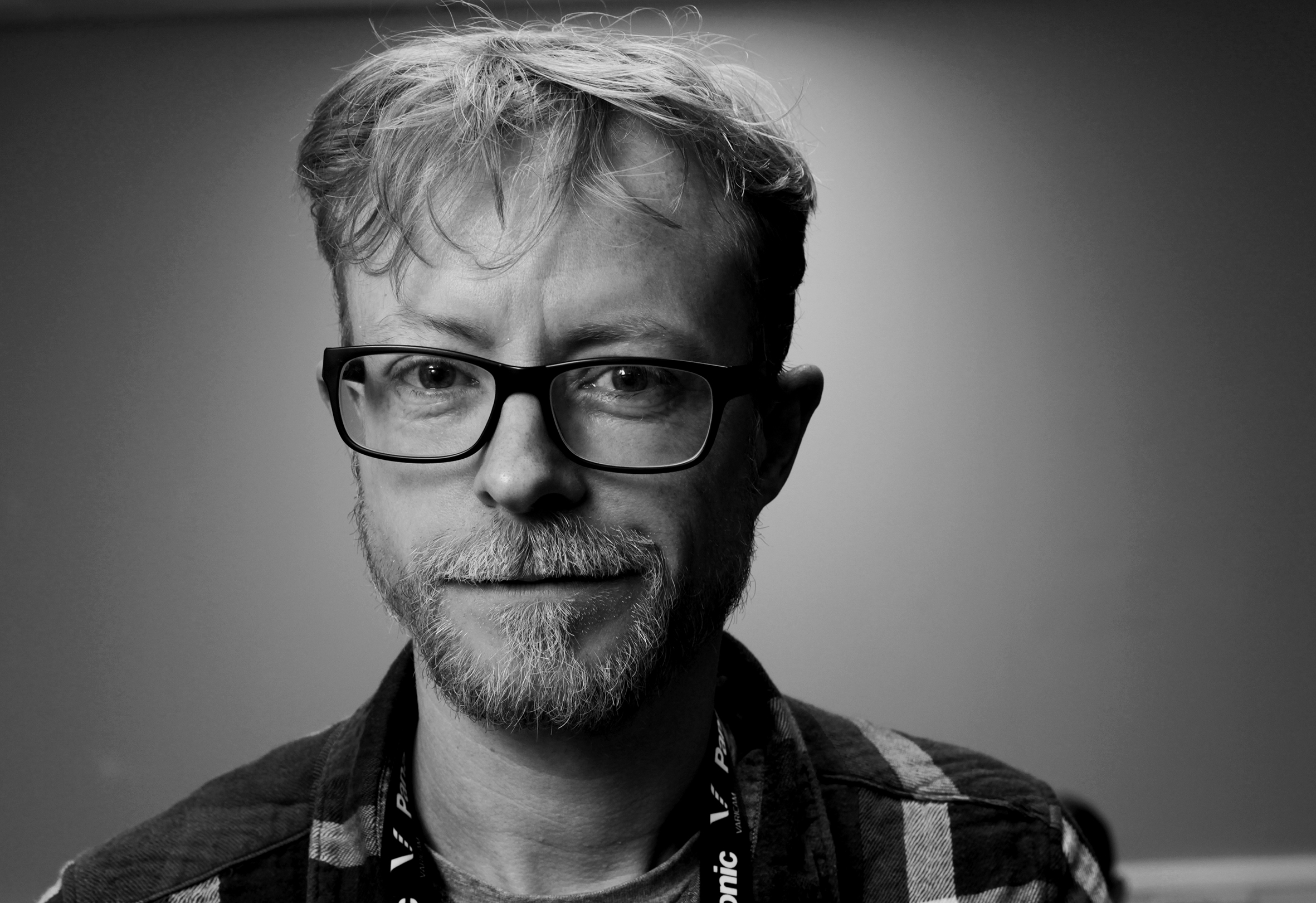Shooting with HD cameras
High definition is now in daily use for production across a range of programming, including dramas, documentaries, features and corporate projects. Let's look at some examples of its practical use in the field, with feedback from cinematographers and directors who have pioneered the move away from 16mm and DV.
Maintaining a consistent picture

For the 10th series of the drama “Where the Heart Is,” the UK's ITV Productions had no international sales consideration and needed SD-only delivery. The decision to select HD over film was partly to act as a test run for the future HD transfer of flagship dramas such as Agatha Christie's “Miss Marple” and “Poirot.”
The show is produced using two Sony HDW-750s with an SD down-converter and picture cache boards along with 9in SD and 14in HD Sony monitors.
For director of photography Russell Glavin, it was his first experience with HD. He approached the shoot as he would for any DigiBeta or film production. By maintaining the same disciplines of lighting and filtering, he was able to retain the established look for the series. To match the 200ASA film stock used previously, he took meter readings and judged stops without referring to the monitor. Instead, he adjusted the gamma patterns in the camera's menu.
Some directors of photography prefer to categorize high-end HD as digital filmmaking. Such digital filmmaking should use the same level and type of crew as for film: first and second assistant director, director of photography and director.
Most directors of photography have used DigiBetas, so they already understand video. From then on it's a case of trusting the camera to work just as for film. There should be no difference, for example, in the way a director of photography would approach lighting. He needs to meter, although most experts advise against reading from the monitor.
Get the TV Tech Newsletter
The professional video industry's #1 source for news, trends and product and tech information. Sign up below.
Lenses matter
Glavin used two zooms (Canon HJ11 and HJ18) and a full set of five primes for “Where the Heart Is.” With some zoom shots, there's an occasional barreling of the image, for example, quickly pulling between background and foreground in a dialogue sequence. Glavin said primes tend to shift the image less.
Freelance owner and operator Dan Mulligan agrees that it is important to choose the right lens. He recommends Zeiss Digi Primes, which, while expensive, can pay dividends in production. If a producer isn't technically aware, he won't realize that cheaper lenses lack the contrast ratio, lens breathing and barreling ability of film lenses — all functions that affect the quality of the image.
Glavin deploys a 1/8 black Tiffen Pro-Mist filter to take the edge off the image sharpness, with 1/4 or 1/2 filters used on occasional close-ups to soften the shot and lighten the shadows.
Director of photography John Rhodes said the HDCAM's image needs a little softening, especially if used straight out of the box. For features that need the detail in projection, it wouldn't be so appropriate, but for television, it's good to soften the sharpness a touch, he said.
Rhodes has shot several HD features (“The Purifiers” and “Feedback”) and HD dramas (“Rockface,” “Only Fools” and “Horses”). For Rollem Productions' eight-hour BBC1 drama “The Chase,” he used two Sony HDW-750s supplied with the standard cine-style kit, including two HD lenses (Canon HJ21×8 and HJ11×4.7), a range of Neutral Density and Pro-Mist filters and a Sony color viewfinder, which he describes as essential.
Rhodes' main task was to establish a look for what is hoped to be the first run of a returning series. As a contemporary drama, the aim was not to make it look studio bound but to keep the lighting natural.
Storing camera setups
Rhodes set both Sony 750s with his personal memory card. He doesn't believe in meddling with the in-camera matrixes and said that if directors of photography do alter the settings too much, it can make problems harder to fix in the grade.
Rhodes shot “The Chase” much as he would a straightforward film drama. His main concern was balancing interiors with exteriors while keeping an eye on overexposure. HD cameras don't carry the same dynamic range as film and are more likely to reveal under or overexposure. You can overexpose a huge amount on film and still retain the detail but that latitude doesn't extend to HD. Allowances can be made by setting the camera with the right dynamic contrast and checking the zebra (a viewfinder function that indicates overexposed areas of the image). Some directors of photography dislike HD cameras that allow the tweak of gamma range in-camera and out of the hands of the operator. For Mulligan, the only difference between film and digital film is that you can dial in the film stock in post.
HD documentaries
Adrian Pennington writes about film and television production.
HD documentaries
Filmmaker Nick Broomfield, best known for his 16mm documentaries, switched to HD for his latest dramatic feature “Ghosts,” which is about the fate of the Chinese cockle pickles on Morecombe Bay.
Broomfield's influential documentary style has been developed with a bare bones crew of between three to five people. He found he was able to maintain this compact shooting method with HD. Shooting 35mm automatically necessitates extra people to manage the lenses and change magazines, and the whole backup of catering and transport, he said. Working in HD allows Broomfield to transmit less tension to the cast's nonactors than if the camera were rolling film.
HD's ability to capture low lighting levels made it ideal to underline the dingy, realistic living conditions of the immigrants' houses. He selected a Sony 750p camera with prime lenses. Cinematographer Mark Wolf wielded the camera handheld, although he said it would need someone with an athletic build to hold the unit for such a long time. For his next feature about Iraq, Broomfield is searching for a handheld camera with similar image quality.
Some night scenes shot on a Norfolk beach required significant noise reduction using Final Touch software and a Snell & Wilcox Niagra. The HD grain was exacerbated in the transfer to 35mm for the final cinema print. Some digital noise was unavoidable, but combined with film grain on transfer, it became too noticeable and would only be negated with the arrival of D-Cinema projection equipment, he said.
Capturing raw from CCD
Although it's widely known for capturing features such as Michael Mann's “Miami Vice,” the Grass Valley Viper is slowly finding its way into conventional broadcast. None can be more conventional than BBC veteran comedy “Last of the Summer Wine.” For 26 series, this was a film production. Mulligan shot the last two series digitally on Sony 750s and then Viper.
For Mulligan, digital filmmaking can only truly be achieved with uncompressed capture from cameras like the ARRI D-20, Grass Valley Viper and Panavision Genesis. The Viper, for example, captures information straight from the CCD, bypassing all in-camera processing. Whether the output is to disc or tape, it's pure unprocessed data that buys users an extra stop and a half of exposure range, Mulligan said. The director of photography has exposure control straight from the lens with no conversion of color temperature, gamma correction or highlight control. With more exposure latitude and more picture data captured to the system, it puts the ability to hold light levels back in the hands of the operator.
Mulligan said the digital negative system, which captures straight from the chip, gets nearest to a film aesthetic. It holds the highlights and rolls into the blacks gracefully. Essentially, it's operating a digital workflow in a film capture mode so the skill of the director of photography can be concentrated on focus, framing and exposure rather than tinkering with 72 submenus.
Director of photography Pat O'Shea monitors the raw log output on a 17in Cine-tal HD screen, which can be switched to give a color-corrected video look. Rushes are down-converted to DVCAM for editing on Avid.
Mulligan said he could almost get away with shooting just off the monitor because he trusts the camera so much. That allows the director to watch the performances by eye and trust the camera to capture the scene.
Tapeless HD
One of the chief advantages with HD acquisition is being able to view rushes almost instantly on-set. That benefit comes to the fore when shooting on digital media, such as disc or Flash memory card (a feature of Grass Valley's Infinity and Panasonic's P2). Random access to clips can be viewed as thumbnails and played back instantly either on a flip-out screen or a field monitor.
Corporate producers began rapidly adopting Sony's XDCAM HD (PDW-F330 and PDW-F350) when it was introduced last summer. They were attracted not only by a cost-effective entry to HD (an F330 camera with an integral lens starts around €12,000) with output validated by Discovery and National Geographic but also by some key tapeless workflow benefits.
Freelancer Alister Chapman specializes in capturing meteorological phenomena like tornados for documentary and stock footage shoots. The XDCAM records proxy MPEG-4 files at the same time as HD files to be downloaded straight off the disc to broadcasters. Chapman often finds himself in a race with rival stormchasers to get footage to a broadcaster and said he's bringing in more sales with this time-saving benefit.
His travel kit includes a laptop loaded with Final Cut Pro and XDCAM plug-in to ingest the images at twice real time. He can press shot markers while shooting to mark clips and note them as good or bad takes so when it comes to editing, he's already created a rough EDL.
Chapman also appreciates the camera's cache record function when trying to capture lightning. Previously, he'd leave the camera running and use up large amounts of tape. Now, only when he sees lightning, he presses the button, and he can be confident that the camera has recorded the previous 10 seconds.
Wailing Banshee founder David Baumber has been shooting XDCAM HD for a recent transatlantic video for London Business School and Columbia Business School in New York. Previously, he'd shoot 40 minutes of tape, capture it for 40 minutes in the edit suite and then scrub through to select a shot. Now, he can download via FireWire, searching for clip numbers rather than time code. During Baumber's six months with the camera, he did not have to use his DVCAM or DigiBeta VTRs. He now saves all rushes as clips on a LaCie drive and reuses the disc.
Such tapeless acquisition of high-definition material seems to point the way forward. The next hurdle is to convince post and production companies to accept disc rather than tape and the alteration in workflow (not to mention the digitisation and dubbing fees) that entails.
Adrian Pennington is a journalist specialising in film and TV production. His work has appeared in The Guardian, RTS Television, Variety, British Cinematographer, Premiere and The Hollywood Reporter. Adrian has edited several publications, co-written a book on stereoscopic 3D and is copywriter of marketing materials for the industry. Follow him @pennington1

